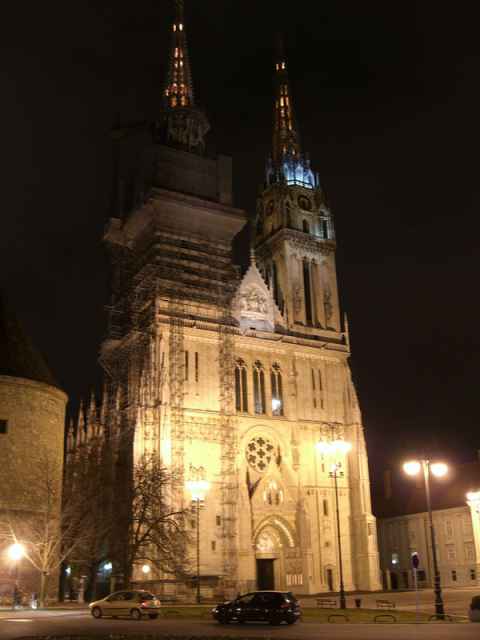Zagreb, Croatia
My grandpa died January 16th, and since his family grave is in Croatia (in Perušić[a], to be exact), I packed my travel stuff and headed on there. My first stop was Zagreb[b]. Things change in 13 years.
Bulldog XL
The first stop was the coffee shop Bulldog XL - an establishment housed in a building where - to quote my host - "the ownership of the house is a bit fuzzy".
Stone Gate
The "Stone Gate" ("Kamenita Vrata") is the last remaining of the five gates that once controlled access to Gradec - which was one-half of old Zagreb (the other half was Kaptol, where the clergy lived). A large fire devastated the gate, but through chance or miracle a picture of Mary survived. The gate is now a small chapel with plaques covering the walls. Most plaques are put there as thanks to Mary, mother of Jesus. Small Croatian dictionary: "Hvala" = "Thanks" and "Majko" = "Mom".
A statue of Dora Krupićeva, a character from the novel "Goldsmith's Gold" ("Zlatarovo zlato") by August Šenoa[c], holding the keys to the city. She is the eponymous goldsmith's daughter. Short summary of the novel: 1. Nobleman (Pavao Gregorijanac) loves non-noble girl (Dora Krupićeva). 2. His father (Stjepko) doesn't approve this affair, and plots against it, 3. Dora is killed in this plot, 4.Pavao gets killed fighting the Turks. The characters could be seen in Zagreb's Time Machine Event[d].
A City in Transformation
With the influx of money that came with the fall of communism, the liberal reforms, and the opening of Croatia to the rest of Europe (not to mention the end of the war of independence[e]), Zagreb is a city in rapid growth and transformation.
The result is that you can see old, almost collapsed, buildings right next to shiny new shopping malls - as these photos from Tkalciceva Street show. The third and fourth photos below were shot from the same spot - one facing east, and the other facing west.
Origin of the Name
The modern name Zagreb likely comes from the Croatian word "zagrabiti", which cannot exactly be translated into English directly; its meaning could best be expressed by saying, "to take from something with a hand or with an object". There are several legends about the origins of the name of Zagreb. According to one legend, a lady was thirsty and she took water from a lake (now the fountain) Manduševac in Zagreb.
The Manduševac fountain is at the east end of the Ban Jelačić Square:
Other Landmarks
Statue of St. George[h] just outside the Stone Gate.
This tower stands on the southern edge of the hill where old Zagreb is situated. Every day at noon a cannon is fired out of the topmost window as a memorial to the many battles with mongols and turks that have been fought here.
St. Mark's Church[i], the parish church of old Zagreb.




















